Programme for International Student Assessment (PISA) 2018: highlights from Scotland's results
Report covering Scotland's performance in the Programme for International Student Assessment (PISA) 2018, covering reading, maths and science.
4. Performance in Reading
4.1 Scotland's performance in Reading
1. Scotland's mean score in Reading in 2018 was 504. This was higher than it was in 2015 (493), similar to 2003, 2006, 2009 and 2012 and lower than 2000 (Chart 4.1.1).
2. Scotland's standard deviation in Reading in 2018 was 95 points. This was similar to 2015 (91 points) and higher than in 2012 (87 points). This means there was more variation in Reading performance in 2018 than there was in 2012.
3. In 2018 in Scotland, performance among girls was higher than among boys in reading (511 vs 497). This was also the case in 2006, 2009, 2012 and 2015 (Chart 4.1.2 and Chart 4.1.3).
4. In 2018, the performance of second generation immigrant students (521), first generation immigrant students (509) and non-immigrant students (506) were all similar in Reading.
5. In 2018, 15.5 per cent of students in Scotland performed below PISA level 2 in Reading. This was similar to 2006, 2009, 2012 and 2015. In 2018, 10.3 per cent of students in Scotland performed at PISA level 5 or better in Reading. This was higher than in 2015 (6.4 per cent) and similar to 2006, 2009 and 2012 (Chart 4.1.4).
6. In 2018, 18.0 per cent of boys performed below PISA Level 2 in Reading, which was higher than the proportion of girls (13.0 per cent). In 2018 the proportion of girls and boys performing at PISA Level 5 or better in Reading was similar (11.4 per cent of girls and 9.2 per cent of boys).
7. The share of variation in reading test scores that was explained by students' background (ESCS) was 8.3 per cent. This was similar to 2015 and 2012 but lower than the 2009 figure of 14.4 per cent. For more information on ESCS please see section 3.1.
8. The ESCS gradient shows how much score varies on average with each step (one point) in social background. The ESCS gradient was 32 points in the reading assessment for Scotland in 2018. This was similar to 2012 (34 points) and 2015 (32 points), but lower than in 2006 (42 points) and 2009 (44 points).
9. The difference between the 5th and 95th percentiles by ESCS was 2.72 points. Combined with a 32-point gradient, this implies that their average scores in reading are apart by 86 points which implies a difference of just under three years' schooling.
Chart 4.1.1: Scotland's PISA reading scores, 2000-2018
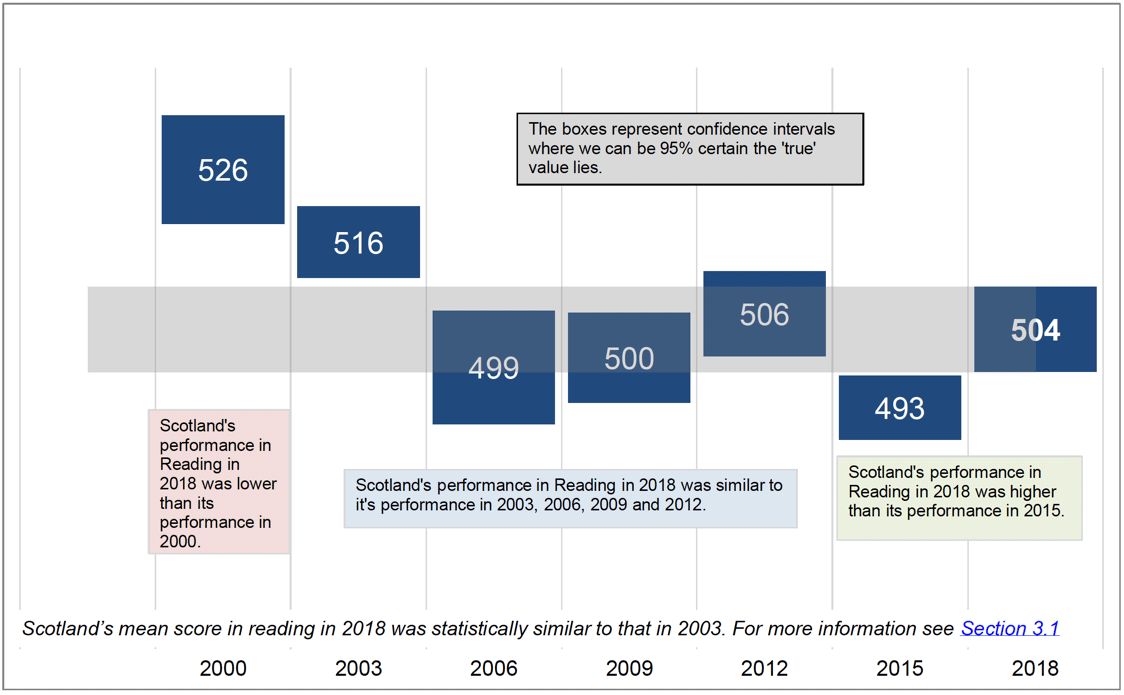
Chart 4.1.2 Scotland's PISA reading scores among girls, 2006-2018
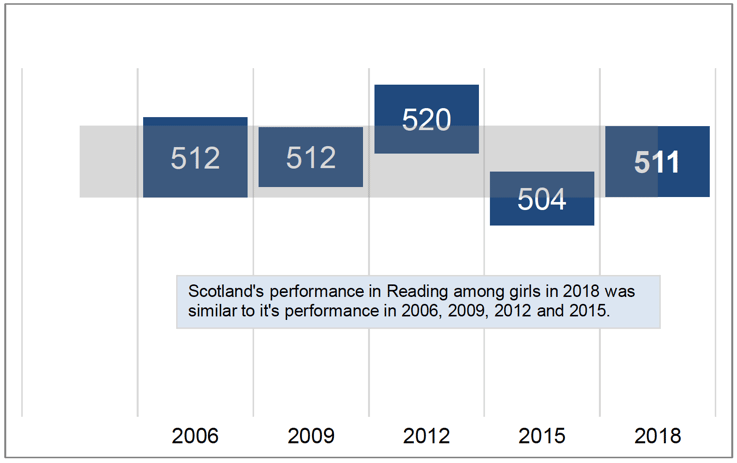
Chart 4.1.3 Scotland's PISA reading scores among boys, 2006-2018
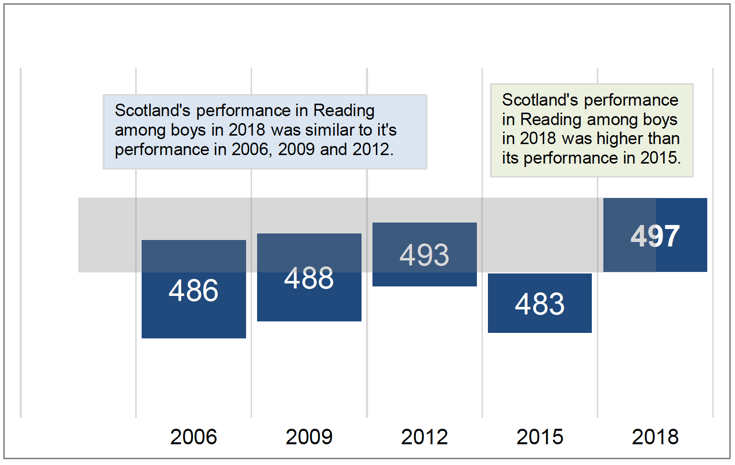
Chart 4.1.4 Scotland's reading scores, by PISA Proficiency Level, 2006-2018
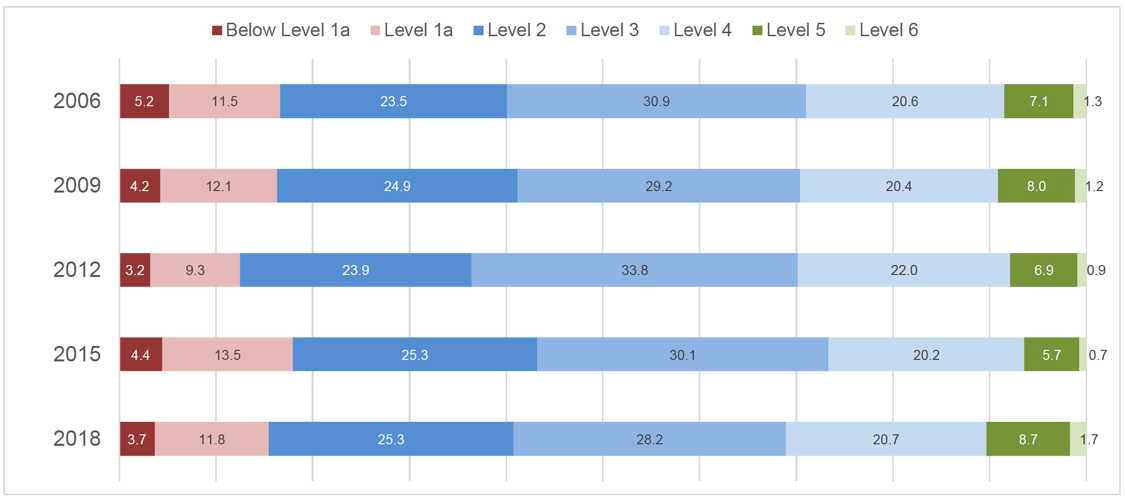
As set out in Chapter 2, the OECD categorise students into Levels according to their ability to undertake certain tasks. However the group below Level 2 merits particular attention, as the OECD consider that Level 2 is the baseline of ability to participate effectively in society.
In 2018, 15.5% of students in Scotland performed below PISA Level 2 in Reading. This was similar to 2006, 2009, 2012 and 2015. In 2018, 10.3% of students in Scotland performed at PISA Level 5 or better in Reading. This was higher than in 2015 (6.4%) and similar to 2006, 2009 and 2012.
4.2 Scotland's performance in Reading relative to countries in the OECD and UK administrations
1. Scotland's mean score in Reading in 2018 of 504 was higher than 22 countries, including Wales (485) and the OECD average (487)[2]. It was similar to 11 countries, including England (505), Northern Ireland (501) and the UK as a whole (504) and lower than five countries, including Ireland (518). See Chart 4.2.1 for more information. Comparisons to non-OECD countries can be found on our new PISA dashboard.
2. Scotland's mean score in Reading among girls in 2018 was higher than 17 countries and the OECD average, similar to 12 countries and the UK as a whole and lower than nine countries (Chart 4.2.2).
3. Scotland's mean score in Reading among boys in 2018 was higher than 26 countries and the OECD average, similar to nine countries and the UK as a whole and lower than three (Chart 4.2.3).
4. Scotland's gender gap in Reading of 15 points (girls – boys) was lower than 26 countries and the OECD average, similar to 12 countries and the UK as a whole and higher than no countries.
5. In 2018, second generation immigrant students in Scotland (521) performed higher than or similar to all OECD countries in Reading, with only Singapore of the non-OECD countries having a higher performance than Scotland. Performance among first generation immigrant students in Scotland (509) was also higher than or similar to all OECD countries in Reading. The OECD average for second generation immigrant students was 465 and for first generation immigrant students was 440.
6. In 2018, 15.5 per cent of students in Scotland performed below PISA Level 2 in Reading. This was higher than two countries, similar to eight countries and lower than 28 countries (Chart 4.2.4). 10.3 per cent of students in Scotland performed at PISA Level 5 or better in Reading. This was lower than eight countries, similar to 12 countries and higher than 18 countries (Chart 4.2.5).
7. The share of variation in reading test scores that was explained by students' background was 8.3 per cent (Chart 4.2.6). This was lower than 17 countries, similar to 20 countries and higher than one (Wales).
8. The ESCS gradient shows how much score varies on average with each step (one point) in social background. The ESCS gradient was 31 points in the reading assessment for Scotland (Chart 4.2.7). Among OECD countries and UK administations, this was lower than 15 countries, similar to 21 countries and higher than two countries (Mexico and Wales).
Chart 4.2.1 PISA reading scores of OECD countries (plus three other UK administrations), relative to Scotland, 2018
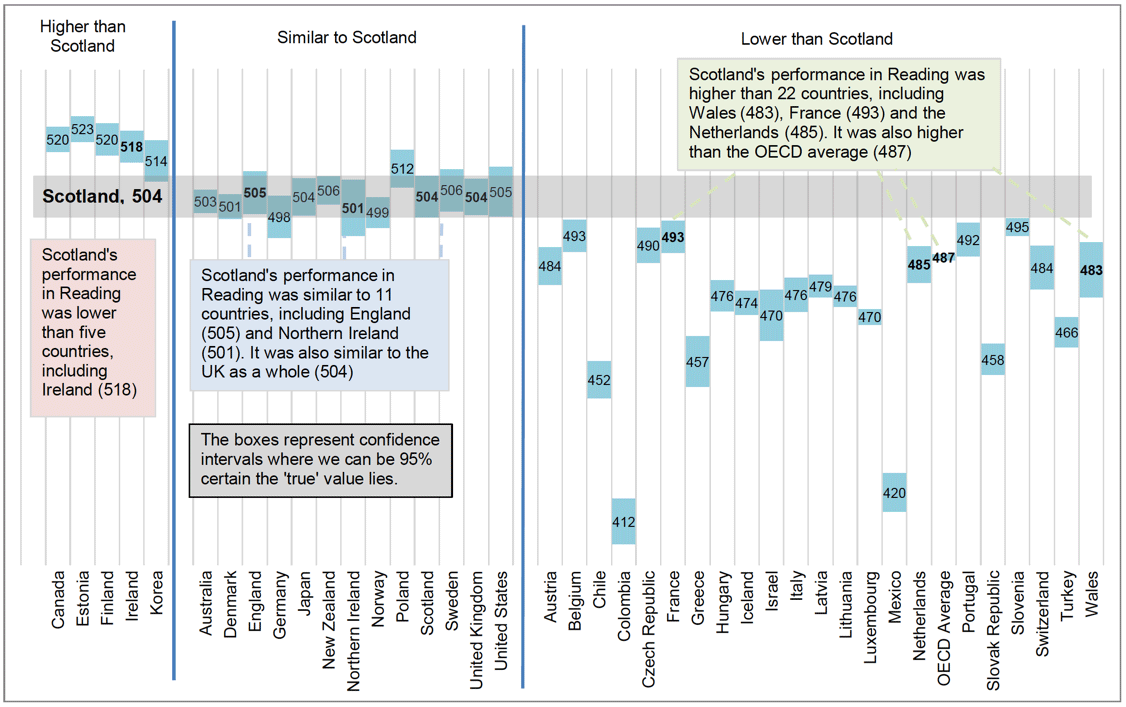
Chart 4.2.2 PISA reading scores among girls in OECD countries, relative to Scotland, 2018
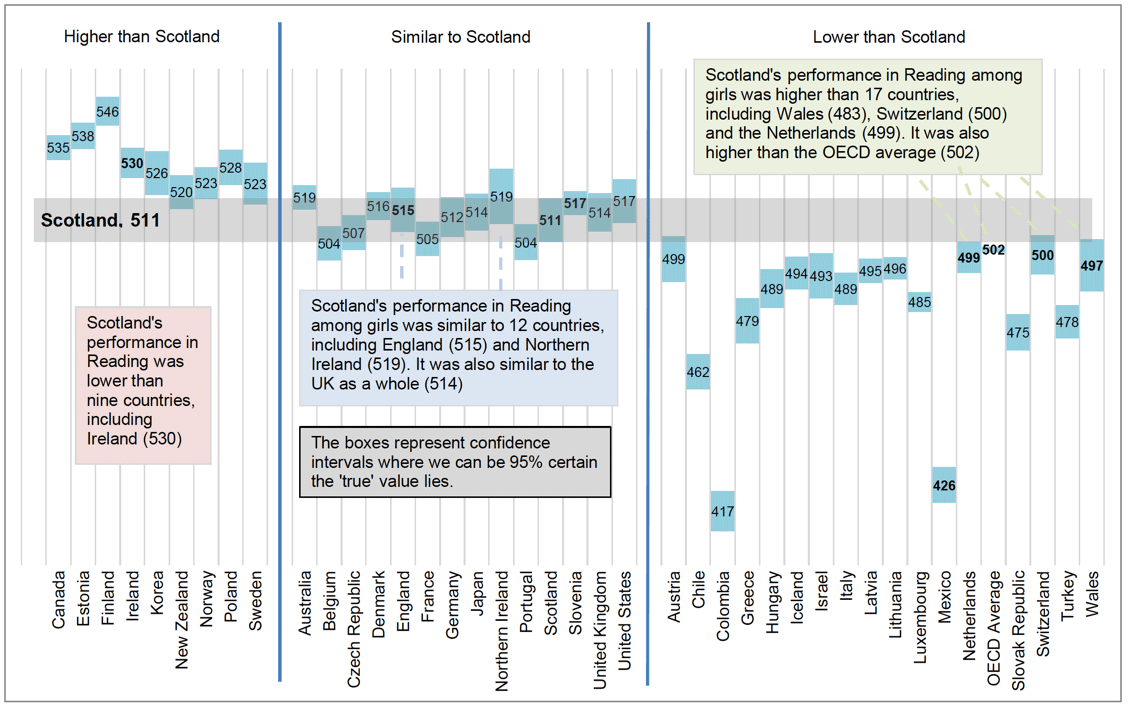
Chart 4.2.3 PISA reading scores among boys in OECD countries, relative to Scotland, 2018
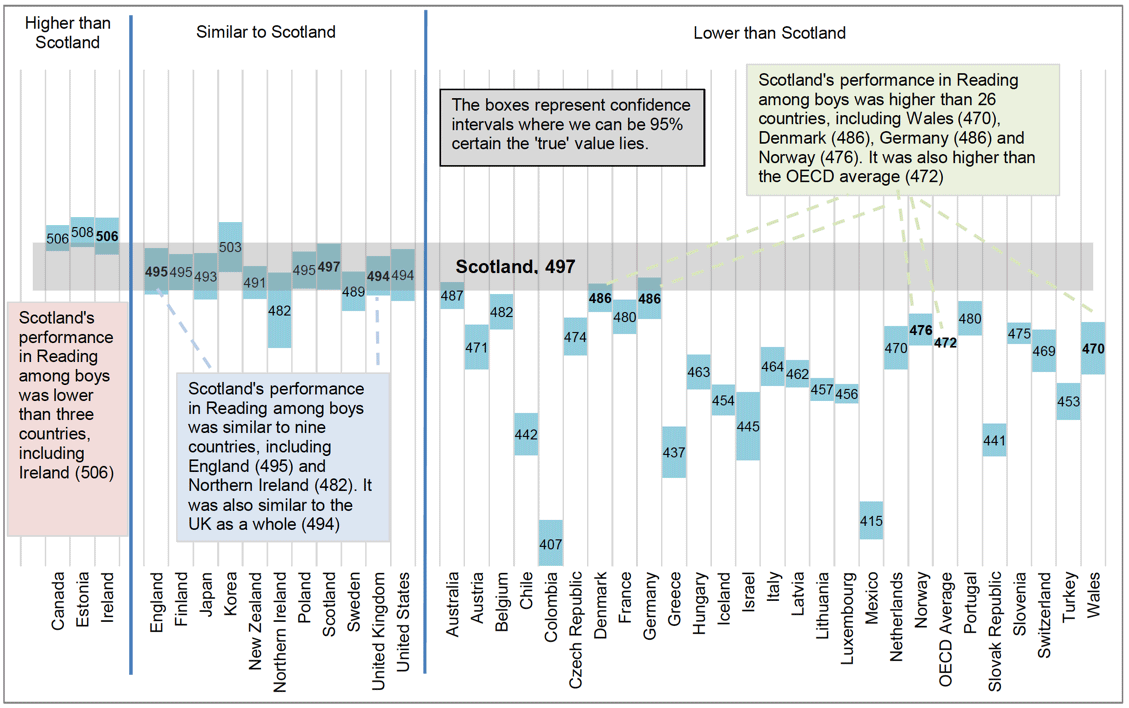
Chart 4.2.4 Proficiency Levels in Reading in OECD countries, arranged by percentage of students below Level 2, 2018
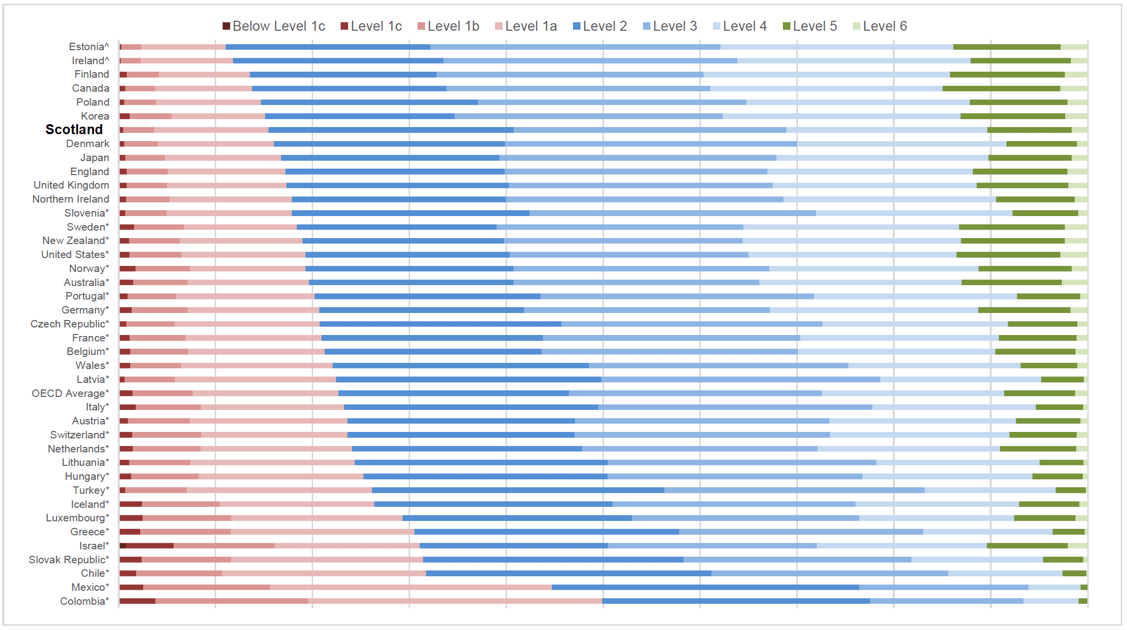
In 2018, 15.5% of students in Scotland performed below PISA Level 2 in Reading. This was higher (^) than two countries, similar to eight countries and the United Kingdom as a whole and lower (*) than 28 countries and the OECD average.
Chart 4.2.5 Proficiency Levels in Reading in OECD countries, arranged by percentage of students at Level 5 or better, 2018
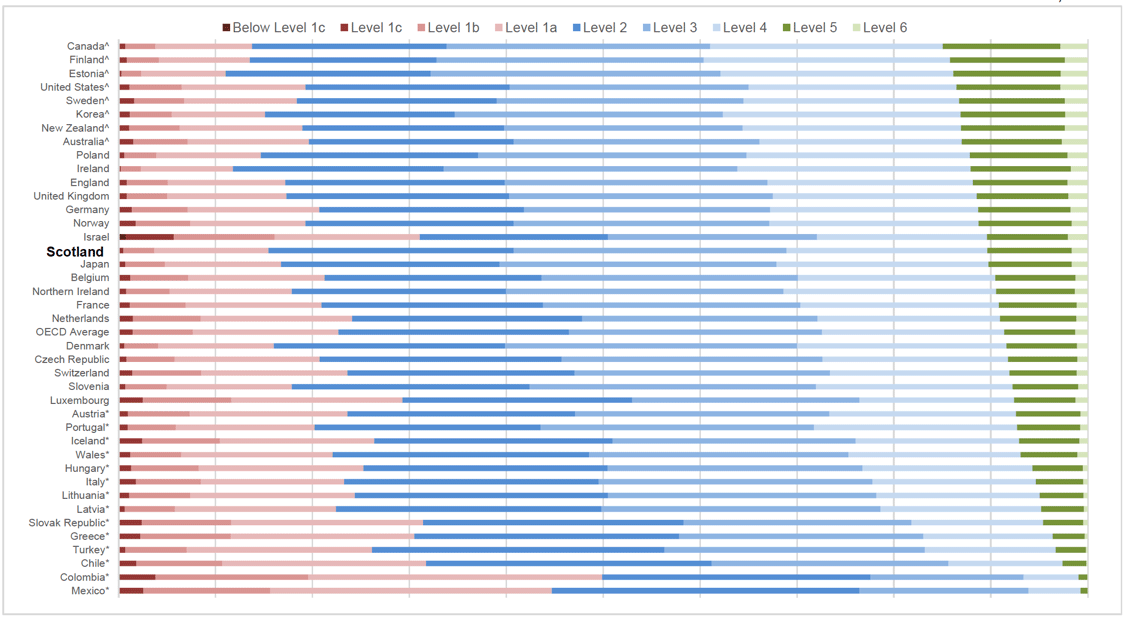
In 2018, 10.3% of students in Scotland performed at PISA level 5 or better in Reading. This was higher (*) than 18 countries, similar to 12 countries, the UK and the OECD average and lower (^) than eight countries.
Chart 4.2.6 Share of variation in Reading performance explained by ESCS in OECD countries, relative to Scotland, 2018
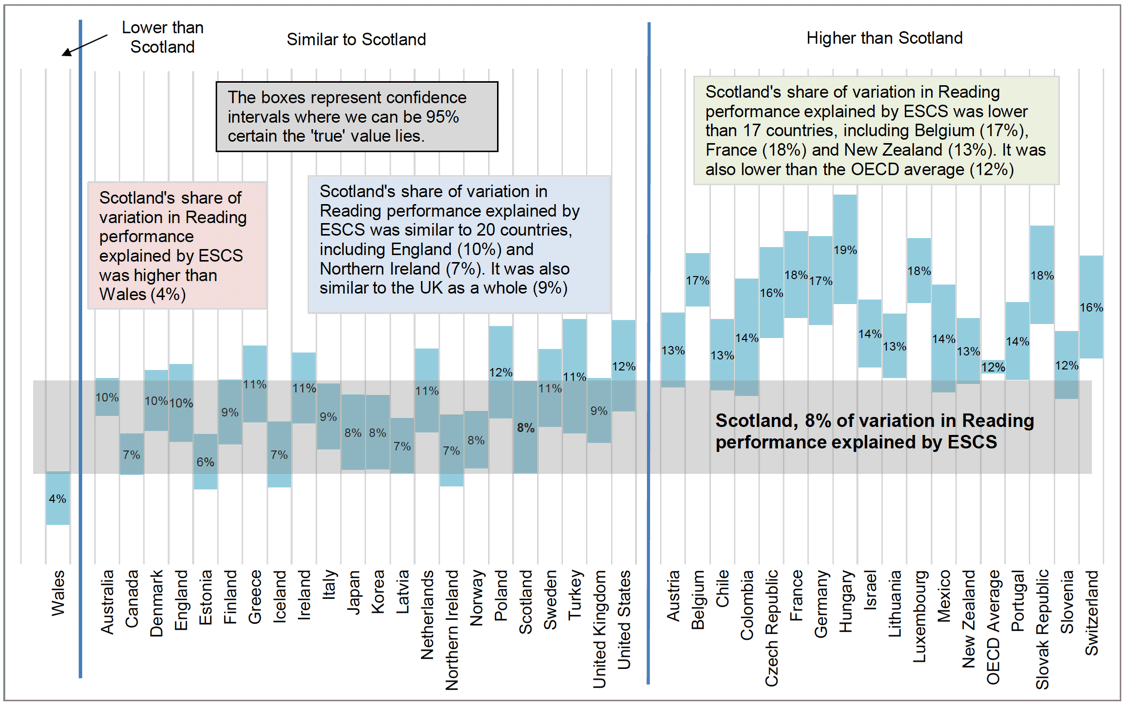
Chart 4.2.7 ESCS gradient in Reading in OECD countries, relative to Scotland, 2018
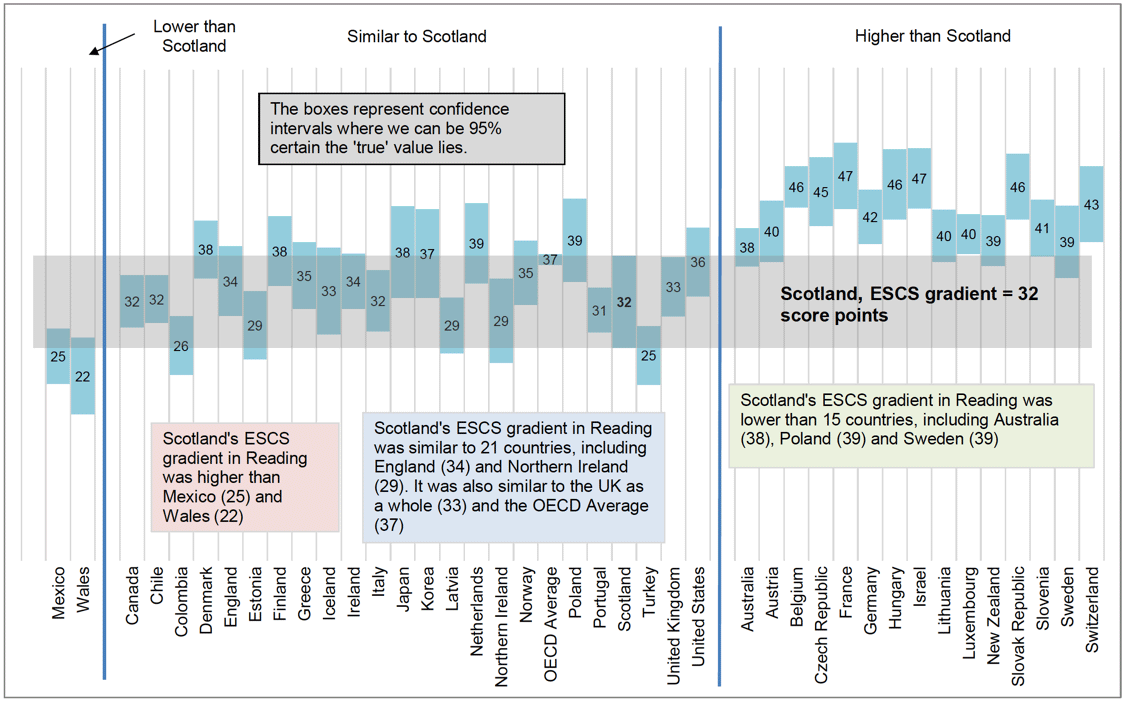
Contact
Email: keith.dryburgh@gov.scot
There is a problem
Thanks for your feedback